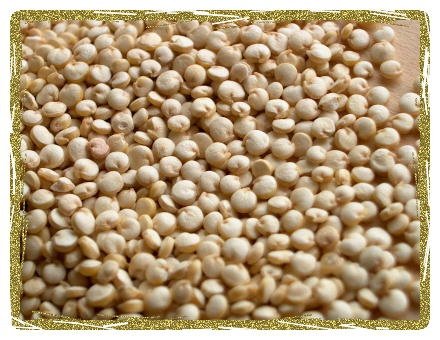
Quinoa “the super food” is believed to be the most nutritious food grain of the world. It belongs to the family Amaranthaceae (subfamily chenopodiodieae). It is a dicot plant and is usually 1-2 meters high. The leaves of the plant are broad having pubescent, smooth to lobed and are alternatively arranged. Leaves have almost up to 43 teeth on their edges and in these edges small granules are formed giving appearance as the leaves edges are covered by the sand. These granules retain small amount of water in them due to which it makes the environment much humid so plant does not need to respire so much hence less water loss thorough respiration as compared to other crops. The stem of the plant is woody and varies in color that may be red, purple or green. The stem may be either branched or unbranched. Panicles may be present on the head of the plant or may emerge from the axils on the stem. Several branches emerge from the main axis of the panicle which may further branch or sub branched to provide the panicle shape. The flowers are bisexual and are self-fertilizing. Seed is only two millimeter in size varying in color from white to red but sometime black color seeds are also observed.
Regarding the climatic condition required it is a very erratic plant which can grow and produce economic yield in erratic climatic conditions. It has been adapted to different climatic zones. Plant can grow at the relative humidity from 44%-88% and can tolerate temperature ranges from -4- 380C but the optimum temperature at which it can produce maximum is raging from 15 to 200C. It is a water efficient plant and can grow in the low soil moisture. 100 to 200 mm of the rainfall is good for obtaining of economic yield. In case of cold or low temperature stress it has been observed that the plant can tolerate the -7.8 0 C of the temperature and still it can produce the good yield. So it is a plant which can be grown in multiple climatic conditions.
Quinoa is a very nutritious crop plant covering almost all the ingredients carbohydrates, fibers, fats, proteins and minerals. Quinoa is the most suitable crop plant having maximum protein content along with all the essential amino acids present in it. It is considered an ideal crop plant due to presence of 13.81 per cent to 21.9 per cent protein contents present in it. It has also been found that the quinoa proteins are superior in quality as compared to the wheat, barley and soybean. Quinoa is rich in lysine and sulfur whereas cereal crops are lacking these amino acids in there proteins. Another very important feature of the quinoa is the presence of high amount of the soluble fibers. Due to presence of high fibers it is very good detoxifying agent which eliminate the wastes of the body and provide the state of fullness and remains in the stomach for a long time. Quinoa has a mineral profile comprising calcium, magnesium, iron, potassium, phosphorous, zinc, manganese and some traces of copper and lithium. It contain vitamin A , E , Thiamine, Riboflavin, Niacin a/nd ascorbic acid which are all the requirement of the human being.
In terms of industrialization of the plant it is used for making multiple products and by products. The saponin present in the plant is used for making of beer, detergent, shampoo, toothpaste, pesticides and antibiotics. The pearl grain part of the seed is used for making grain floor, bread, biscuits, dumplings, sauces, pasta, desserts, sweets and cakes. It is also used for making some other useful products like drinks, soups, yogurt and purees. Some byproducts including snacks and puffed quinoa could also be made from it. Kancolla is the sweet variety of quinoa which is used as food crops just like wheat and rice. Quinoa is also termed as pseudo cereal.
The year 2013 has been regarded as the international year of quinoa by doing all these activities. Scientists and governments are trying to create awareness among the people about this historic plant.
The need of the hour is that we need such plants which could provide us better nutrition along with the food security and better production in climate changing scenario. As the quinoa plant is tolerant to drought, salinity and other abiotic stresses I think its potential should be explored in the Pakistan. It could be easily grown on hilly areas of Pakistan and also in the irrigated lands. Efforts have already been started in the University of Agriculture Faisalabad for its acclimatization and its potential needs to be explored more. Plant breeders should pay attention towards this plant and improve its nutritional quality as well as its yield characters should also be improved. The sapiens are present in the seed which are nutritionally undesirable concentration should be played in improving the quality of the plant for its economic cultivation and commercialization.
Quinoa is tolerant to certain abiotic stress and also nutritionally a very good plant so I suggest that it must be paid attention by our scientists so that we can overcome the food shortage along with the environment friendly agriculture.